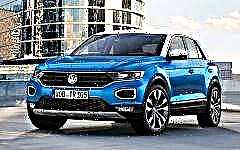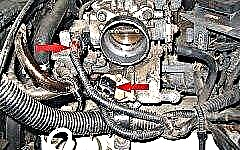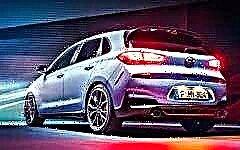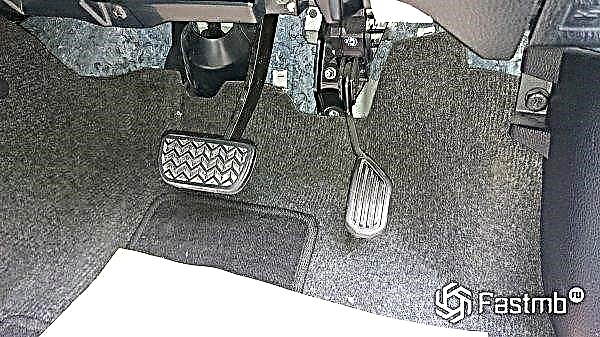
The content of the article:
- The birth of a brand
- Hippie mobile
- Volkswagen golf
- Volkswagen is the first foreign concern to open production in the USA
- Using platforms from other manufacturers
- Unprofitability of the concern in the early 70s
- Glass manufactory
- Discontinued Volkswagen models in developing countries
- Volkswagen is a multi-brand corporation
- Volkswagen is the fastest car in the world
Germany has long gained a reputation as a manufacturer of quality cars in all price categories, but apart from the "big three": BMW, Audi and Mercedes, as well as a dozen smaller manufacturers, Volkswagen is keeping aloof. The name of this brand translates literally as "people's car", since it was originally created as a manufacturer of cheap vehicles.
Today, the products of this brand cover almost all price categories, and divisions are scattered around the world. Let's consider the most interesting facts from the history of its creation and formation.
1. The birth of a legend

Initially, according to the main version of the appearance of the "people's car", the decision to create the Volkswagen brand was born after a meeting between Adolf Hitler and Ferdinand Porsche, at which the idea of creating an affordable and simple vehicle for German families was discussed.
The main requirement for the new model was the presence of a full-fledged five-seater saloon, low fuel consumption and a top speed exceeding 100 km / h. According to this legend, Porsche provided the first for work in 1934, after which it was decided to build a plant.
Germany in the mid-30s of the last century was actively building highways, which already had excellent coverage, several lanes in each direction and multi-level interchanges.
However, due to the need to develop industry, including the military, the main budget expenditures were bypassed by the population, and the German auto giants did not produce affordable models either.
At the beginning of mass production of the Beetle, only one in 50 citizens owned a car. The problem of motorization had to be solved, and a simple and very cheap Volkswagen Beetle was the ideal tool for this. The relationship with Porsche can be traced in the silhouette of the body, as well as in the layout itself - the engine was located at the rear.
2. Hippie mobile

Volkswagen Beetle turned out to be so successful that many modifications and even new class cars were made on its basis. One of them was the Volkswagen Transporter, aka Volkswagen Bulli. The most interesting thing is that this car retained a rear-engined layout, which, thanks to the low boxer motor, was relatively easy to do.
After some time, it was replaced by the second generation, which was fundamentally no different, but thanks to the transfer of production to Mexico, it was successfully sold until the second decade of the 21st century. Naturally, the minibus received a new engine, which finally gained air cooling, a slight restyling, but the basis for it remained the same. The car was extremely popular among young people and especially among informal movements, for which it received the corresponding nickname "hippie mobile".
3. Volkswagen Golf

It would be an unforgivable mistake to bypass this model, because the name of the car automatically spread to a whole class of vehicles around the world.
It is thanks to Volkswagen Golf that we have such a concept as "golf class".
The compact hatchback with front-wheel drive and a rather modest design did not at all pretend to be a world bestseller, but this is exactly what happened. The car lasted 19 years on the assembly line, which is simply unthinkable for the foreign automobile industry.
A lot of modifications and versions, aimed at different target audiences, allowed to achieve record sales. The Golf has gone through many restyling, modernization and generational changes and even grew out of its own class, but at the same time remains the standard of reliability and comfort for family cars.
Despite the fact that the emergence of the first generation Passat, the front-wheel drive platform of which became the basis for many subsequent models, is considered a turning point in the history of the company, it was the Golf that provided record sales for the brand.
4. Volkswagen is the first foreign concern to open production in the USA

The specifics of the North American market are such that the transportation of an already finished car across the ocean makes it uncompetitive. This is especially important for budget models, which is why in 1976 full-scale production of Volkswagen Golf was started on the basis of the already built Chrysler workshop.
It is noteworthy that in the 70s the target audience of compact and economical cars in the United States had not yet formed, but quite soon the fuel crisis made its adjustments and the Americans appreciated the advanced model at that time.
5. Using platforms from other manufacturers

In the context of globalization, the use of third-party components and assemblies is common practice, but Volkswagen often used the entire platform as a whole.
So, the Sharan minivan, developed jointly with Ford, was an almost exact copy of the Galaxy model and differed only in some trim details and the choice of a version with a branded German all-wheel drive.
And the fifth-generation Passat car, presented to the public in 1996, was structurally unified with the Audi A4 and A6 models, which made it possible to use more powerful and larger Audi engines, since the platform assumed the classic longitudinal arrangement of the power unit.
If we consider a more distant historical period, then in the late 60s - mid 70s, sports coupes were also produced together with Porsche, officially called Volkswagen-Porsche-914. The car was equipped with engines with a working volume of 1.7 or 2.0 liters, which was unacceptable for a sports model. As a result, Porsche has lost part of its traditional target audience, but has acquired a new one, which has liked an affordable and simple car.
6. Unprofitableness of the concern in the early 70s

Despite the stable demand for basic models, the company's management was aware of the fact that the concern vitally needed a qualitatively new breakthrough. That is why, from the late 60s to the early 70s, astronomical sums were spent on the development of new models. The costs were so high that they were many times higher than the profit, and the company was supported by accumulated reserves.
The situation changed dramatically with the appearance of the first generation Passat in 1973, and just a year later, the production of the legendary Golf started, which made it possible to fully cover all costs over the past few years already in 1975.
The technical potential laid down in the mid-70s has not been fully realized to this day, being reflected in the available models for emerging markets.
7. Glass manufactory

Despite the fact that the main target audience of the concern has always been the pragmatic middle class, in 2002 it was decided to launch the premium Phaeton model.
Since in order to create demand in this segment, it is necessary not only to create a decent car, but also to shape its image, a unique plant - Glass Manufactory - was built. It is a high-tech building with glass exterior walls and industrial premises that more closely resemble a respectable office.
Parquet flooring and landscape design with exclusive landscaping and reservoirs in the adjacent territory gave a special chic to the project.
Even when designing a new car, the concern tried to preserve the concept of a "people's car" as much as possible, creating a model for those who were not used to standing out from the crowd, which was the reason for the frankly weak demand. More than 10 years later, the production of the Phaeton was discontinued, and the unique enterprise was reoriented to the production of electric vehicles.
8. Discontinued Volkswagen models in developing countries

Of course, the modern realities of the third world countries are such that the advanced developments of automobile giants will not be in demand there due to the high cost. However, if we talk about Volkswagen, the transfer of discontinued models to developing countries and their subsequent modernization and adaptation to the realities of the local market is truly massive.
Moreover, we are not talking about the poorest countries that do not have their own industry, but also about such an automobile power as China. It was in the Celestial Empire that Santana cars (a reincarnation of Passat from the early 80s) and Jetta (a sedan built on the Golf platform of the second and third generations) became one of the most popular.
The Chinese appreciated the German quality and spacious interiors, and the local Volkswagen divisions regularly carry out restyling and modernize the aggregate component.
Against this background, the fact that the first generation Beetle and the second generation Transporter were produced in Brazil until the end of the 2010s is not surprising. Moreover, the heir to the legendary Golf - Volkswagen Pointer, built on the third generation platform, was quite successfully sold in Russia.
9. Volkswagen is a multi-brand corporation

Few people know, but the Volkswagen parent company owns the brands Audi, Skoda, Seat and even Aleko. And if Audi continues to work on its own line of cars, cooperating only in scientific and technical terms, then Skoda and Seat have completely switched to using the platforms of the parent enterprise.
As for Aleko, export versions of Moskvich 2141 were produced under this name, and in 2013, when the plant ceased to exist both in reality and on paper, the title documents were bought out by Volkswagen. Then many expected the appearance of a super budget model under this name, but the further fate of this project is still not known.
In addition, the concern also owns the luxury divisions of Bentley, Lamborghoni and Bugatti. And if there were no special problems with the first two brands, the acquisition of Bugatti literally saved this brand from extinction, because it was Volkswagen engineers who brought the legendary Veyron to mass production.
Contrary to the widespread belief of marketers, the German concern does not at all seek to differentiate the products of its divisions as much as possible. On the contrary, Skoda and Volkswagen models are openly competing all over the world. According to the company's management, it is better to provide the buyer with a choice of several of the same type of cars of their brands, rather than force him to choose between one Volkswagen model and several from third-party competitors.
10. Volkswagen is the fastest car in the world

Naturally, we are talking about a car in the traditional sense of the word, without rocket engines and a fuselage from a fighter, which are capable of exceeding the 1000 km / h mark. If we recall the fact that Bugatti is part of the Volkswagen group of companies, and when creating the Veyron, the engineering developments of the latter, in particular the engine, were actively used, then the maximum speed of 432 km / h is more likely an achievement of the “people's car” manufacturer.
The most amazing thing is that the concept of this supercar was presented to the public back in 1999, and the achieved performance has not been surpassed by any mass-produced car to this day. From 2005 to 2015, only 450 copies were produced.
The engine itself deserves a special mention - with a design power of 1001 hp. its real constructive efficiency exceeded 3000 hp, and all the difference in these indicators was spent on the generated heat energy, which, by the way, would be enough to heat 100 residential buildings.
The amazing facts do not end there. For example, a car's gas tank consists of 250 welded elements, while in a conventional car this figure does not exceed 3-5 parts.
The history of Volkswagen fully reflects the milestones in the development of the automotive industry around the world. Many manufacturers went through the same stages before or much later than the German concern. It is noteworthy that Volkswagen maintains a leading position in a number of segments to this day, producing not only cars for the general public, but also exclusive models for the markets of certain countries.
Volkswagen Beetle - the story of an automotive legend:
Volkswagen











